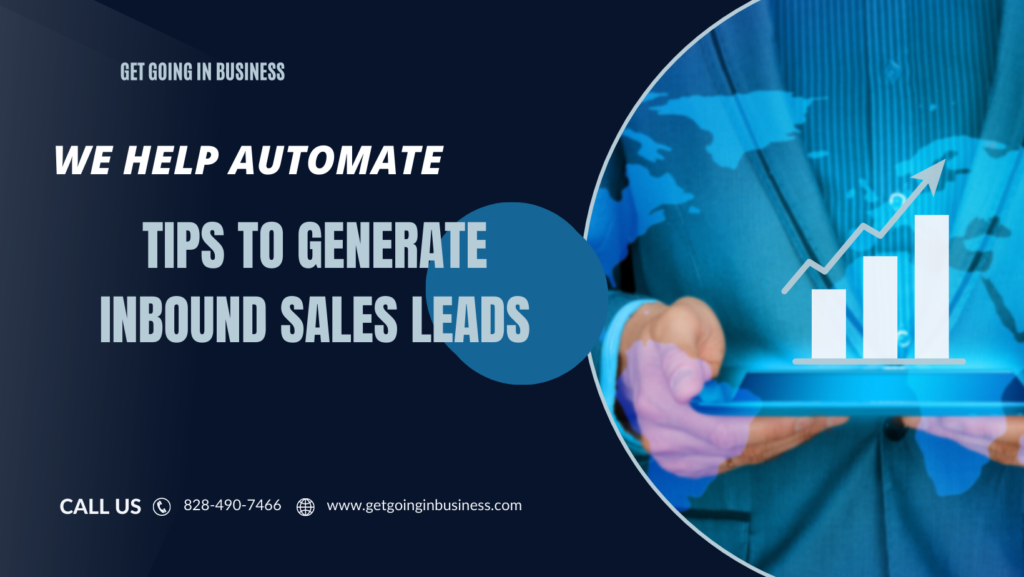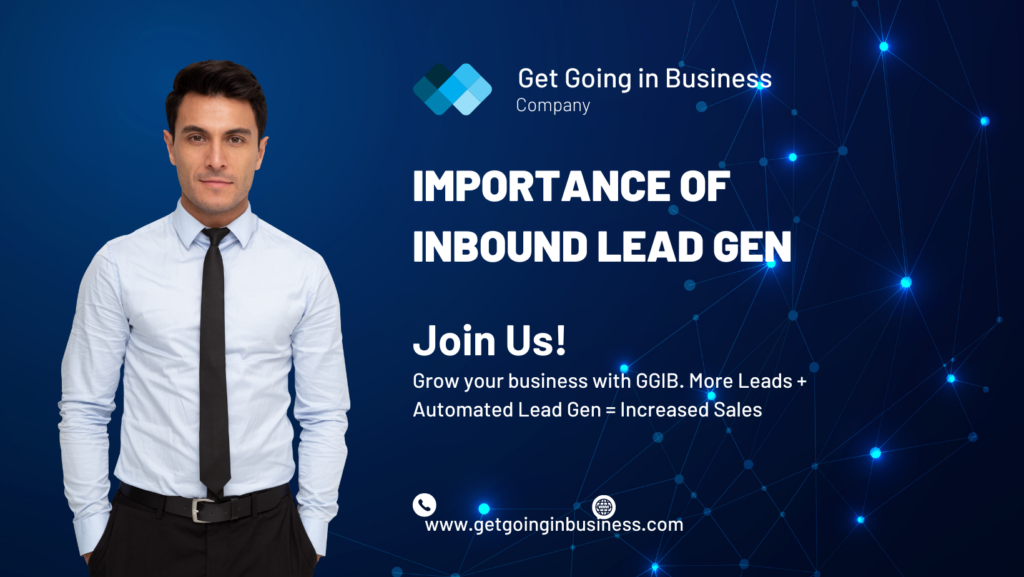10 Tips to Help You Generate Inbound Sales Leads

It can feel like an uphill battle to generate enough inbound sales leads to make marketing campaigns profitable. We have been there ourselves and know what it is like because we have experienced the same thing. Every successful marketing team has to struggle with testing too many strategies and variables until they get what works best for them. After years of experimenting, we finally discovered the right formula and the truth is that getting the basics exactly right is all it takes. Here are ten ways to generate inbound sales, and once you understand them, they will continue to work wonders for you with little maintenance. 1. Let your Blog be a Valuable Resource According to the HubSpot State of Inbound 2018 Report, 61% of marketers consider blogging their number one inbound marketing strategy, while 61% cite generating traffic and leads as their biggest ongoing challenge. In contrast, Ahrefs’ research reveals that 91% of online content receives no Google traffic whatsoever. It’s no wonder that traffic and leads are major concerns for marketers, but what’s going on here? The Ahrefs study identified two primary reasons content is not getting the traffic it deserves: You must make your blog a valuable online resource to turn it into an inbound lead generation tool. You must discover what difficulties your target audience is facing (business management, purchasing choices, work-life balance – whatever) and strive to create the best online resource for them. Creating content that people actually engage with is what the other 9% of the people are doing, and it’s what converts their blogs into inbound sales generating vehicles. 2. Creating Evergreen Email Content With your blog being constantly updated with valuable content, you will produce long-lasting evergreen emails that provide some of the best ideas in your industry. You must provide cutting-edge content with headlines people find difficult to resist. Something that turns even the ice-cold traffic into potential customers. Preferably, this content has to be so excellent that people are almost willing to pay for it. Unless you plan to give it away for free—all they need to do is download it and give up their email address—you must give them something of excellent quality. 3. Go on Social and Promote Your Content Well, if you’re creating attention-grabbing and evergreen content on your blogs and emails, why not boost your reach by posting it on social media? To optimize your reach, have a mix of organic and paid social media strategies depending on the networks you’re advertising on. It’s still possible to generate organic traffic from Twitter without paying for ads, but it’s very difficult to do so from Facebook these days. On the other hand, Twitter ads are quite expensive and Facebook’s ad targeting options will take your marketing to the next level. We suggest focusing on paid ads on Facebook and using Twitter to reach a wider audience organically in this scenario. You still want to do the necessary organic work on Facebook—post your content, engage with relevant pages and groups, etc. But keep in mind that you must pay for ads to get the reach you need. 4. Write Guest Posts By now, you should be used to publishing industry-leading content and you have your blog to prove it. The next step is to reach out to industry-leading online publications and offer to write for them. By collaborating with other businesses, you can reach a new audience with the same interests as the people you want to generate leads from. Show these people what distinguishes you from other companies in your field, and give them a reason to learn more about your company. 5. Use Pay Per Click (PPC) Ads Creating the content you need and getting it to rank well in search is a time-consuming strategy. One excellent way to generate consistent inbound sales leads is through PPC advertising. This works instantly. With organic content-driven inbound marketing strategies, you largely generate leads from people who are very interested in your products or services, but they are not yet ready to purchase them. Even after a lead has expressed interest in your product, you still have to nurture him or her along the sales funnel. However, there is a small (and highly profitable) group of people who have already decided to purchase what you are offering; they just haven’t decided where they will purchase it yet. People search “best email marketing software for large retailers,” “top PPC agencies in Manchester,” or “emergency plumber near me Sunday” to discover the best providers. Google Ads allows you to get your brand seen by these people at the crucial moment when they are ready to buy. 6. Set up Remarketing Campaigns to Reach Visitors Who Leave without Converting. Google Ads is a great way to capture inbound sales leads from people who are ready to buy now, but not everyone is willing to pay immediately. Some people may get cold feet, go back to the results page, and check out the competition. Well, don’t panic, it happens. You can keep reaching out to these prospects and keep them on-board with your brand with remarketing. You already know that these leads are really interested in your service/product since they clicked your ad. Give them an extra incentive to return to your site and close the deal. 7. Public Speaking at Industry Events Face-to-face contact is still one of the greatest inbound lead generation methods. You can become a real industry leader by speaking at industry events, where people will pay to hear you. CEO of Venture Harbour, Marcus Taylor, after speaking at every marketing event from 2012 to 2015, realized that speaking at big conferences is largely ineffective. “First of all, there are too many competitors pitching for the prospect’s attention. It’s like trying to promote your book in a bookstore: Unless you have something truly exceptional to say, you’re soon forgotten. The bigger problem, though, is that most of the audience assumes that you’ll be busy after your talk
Importance of Inbound Lead Generation to Your Business

People have become resistant to any effort to generate leads online. As a result, outbound lead gen has become more difficult while requiring significant expertise and skills. Many modern businesses have adopted inbound lead generation as their primary approach. The strategy has become popular and is now the go-to approach for targeting low-hanging fruit and accelerating the sales cycle. In this article, we’ll explain to you everything you need to know about inbound lead generation—including the benefits and a step-by-step process to help you get started. Are you ready? Let’s get started. What Is Inbound Marketing Lead Generation? Inbound Marketing Lead Generation is a way to attract new prospects to your business through customized educational content. Rather than reaching out to potential leads, you’ll target them with content that answers their specific questions. Having inbound content on your site will help you generate marketing-qualified leads (MQLs) via organic traffic. Visitors will be encouraged to take an action (download an ebook, get a product demo, gain access to a case study, etc.) which will entice them to provide you with their contact details. Advantages of Inbound Lead Generation There are many ways to generate new leads and grow your customer base, but due to limited time and the intense competition in your industry, it’s crucial to prioritize lead-generation strategies that will help your company thrive. Let’s find out why inbound marketing lead generation is such a popular strategy among major B2B corporations around the world. 1. High-Quality Leads When comparing lead generation techniques for B2B businesses, quality should always come first. A strategy that does not help you find quality leads who are ready to convert should never be prioritized. Currently, your prospect’s pain points and interest in your offers determine lead quality. These two factors are difficult to ascertain using outbound lead generation techniques. When you use inbound lead generation, the prospect will come to you seeking assistance. They will find your blog post, which answers all their questions and establishes you as an expert in your field. This will encourage them to reach out to you. This way, there’s no guessing whether r or not your ideal client profile (ICP) fits your customers. Google will send you dozens of qualified prospects if you rank high in the SERPs for the right keywords. 2. Increase Your Reach Where do we all turn to when we are looking for a solution? Most of us go to search engines, specifically Google. Over 92% of the search engine market share is controlled by Google, which has 4.3 billion active users. People turn to Google for quick solutions from established experts to overcome the many challenges they face daily. You can reach tens of thousands of potential buyers through an SEO-based content marketing strategy. Through the use of proper SEO techniques, a single keyword with a high search volume may draw hundreds of potential clients to your website each month. With inbound marketing, you can both expand your search engine presence and make it more difficult for competitors to dominate you. Your market share will be fairly divided, and you’ll stay on your potential customer’s radar no matter where they go. 3. Affordability and Efficiency It’s significantly cheaper to generate leads with inbound marketing than with outbound marketing. You won’t face any unexpected or excessive expenses down the line if you use this approach to find new customers. For example, you need to create high-quality content for an inbound lead generation campaign and optimize it for SEO. Your website must also be improved and you must build more authoritative backlinks to outrank your rivals for keywords. Even before you begin your inbound campaign, you can anticipate and prepare for all of these costs. The best part is that you can recycle the content you created into other marketing or sales campaigns later on. You may also use it in your social media campaigns or turn it into infographics or videos, among other things. It helps you develop new prospects and keep them as customers for a long time. 4. Sustainability Inbound lead generation is a game changer if you want to sustainably generate organic visitors to your sales funnel. It can take weeks or even months for a website to be indexed and ranked on Google, but once it does, it can drive a lot of interested leads. What’s interesting is that organic web pages are here to stay as long as they are SEO-optimized and up-to-date with Google’s latest trends. You can keep your rankings on search engines and capture new leads from a blog post you published many years ago. Infographics, YouTube videos, audio podcasts, and guest posts are all examples of content that can be used on social media. It’s crucial to be patient when striving for sustainable results because it is impossible to achieve them right away. Furthermore, even if your inbound lead generation results are sustainable, you should continue creating new content. Google has always preferred active websites and updated pages when it comes to SEO. Make sure to develop a long-term content strategy to keep your customers’ attention. 5. Scalability There is no limit to the number of inbound leads your business can generate. Creating new infographics, podcast episodes, and videos is just one way to target thousands of keywords in your content. You can engage more prospects across different platforms by regularly publishing new blog posts. You can also make the most of your initial investment by later updating or recycling each piece into a different form. To scale your content, you won’t have to grow your in-house team or train any newcomers in order to scale up your content creation efforts. You can easily outsource the work to freelancers or third-party agencies to assist with the development of your content. You can easily scale up and down based on your content needs and lead generation objectives. What Are the Key Elements of Inbound Lead Generation? While the ultimate goal is increasing lead conversions, the method
